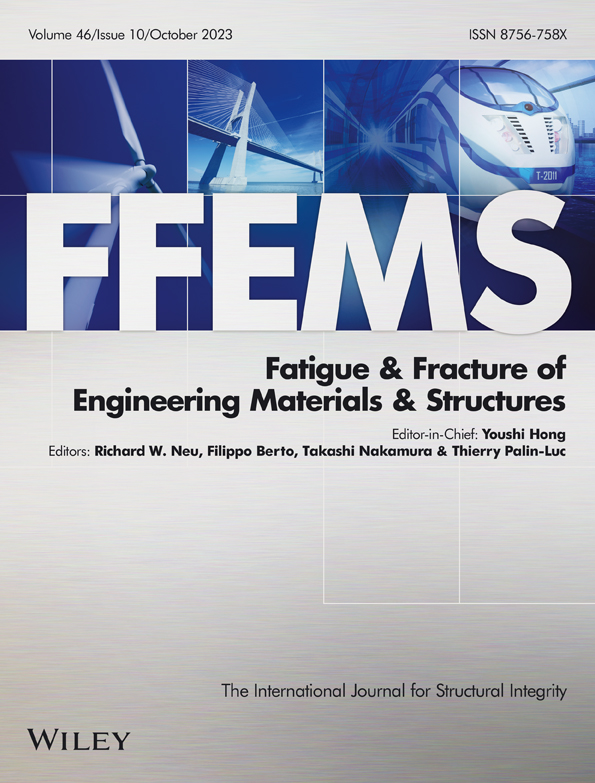Experimental and computational studies of load ratio effect on fatigue crack growth rates in Alloy 709 at elevated temperatures
Abstract
Experimental testing and finite element simulations of fatigue crack growth were performed in austenitic 20Cr-25Ni (Alloy 709) steel at different load ratios and elevated temperatures. The experimental tests were performed using compact tension specimens, and crack growth rates were measured at stress intensity factors ranging between 5 and 35 MPa√m. Fractographic analysis using scanning electron microscopy indicated crack surface roughness and secondary cracking depending on testing temperature and load ratio. Finite element simulations of fatigue crack growth were performed to compute plasticity-induced crack opening loads and predict crack growth rates. Predictions of fatigue crack growth rates using finite element simulations were performed using the computed crack-tip opening loads, and they are shown to match well the experimental measurements.
Highlights
- Crack growth rates were measured in compact tension specimens of steel Alloy 709.
- Computational simulations of plasticity-induced crack closure were performed with ABAQUS.
- Fatigue crack growth predictions are compared with test data at high temperatures.
- Crack opening loads can account for load ratio effects in Alloy 709.
Open Research
DATA AVAILABILITY STATEMENT
Research data are not shared.




